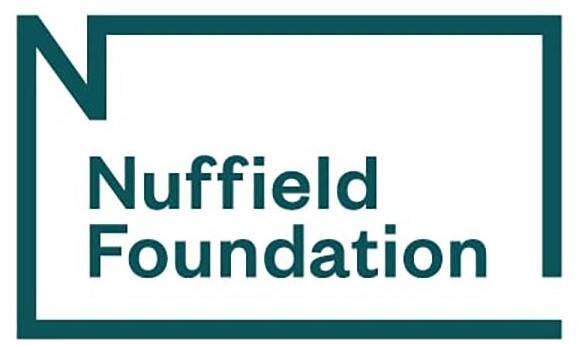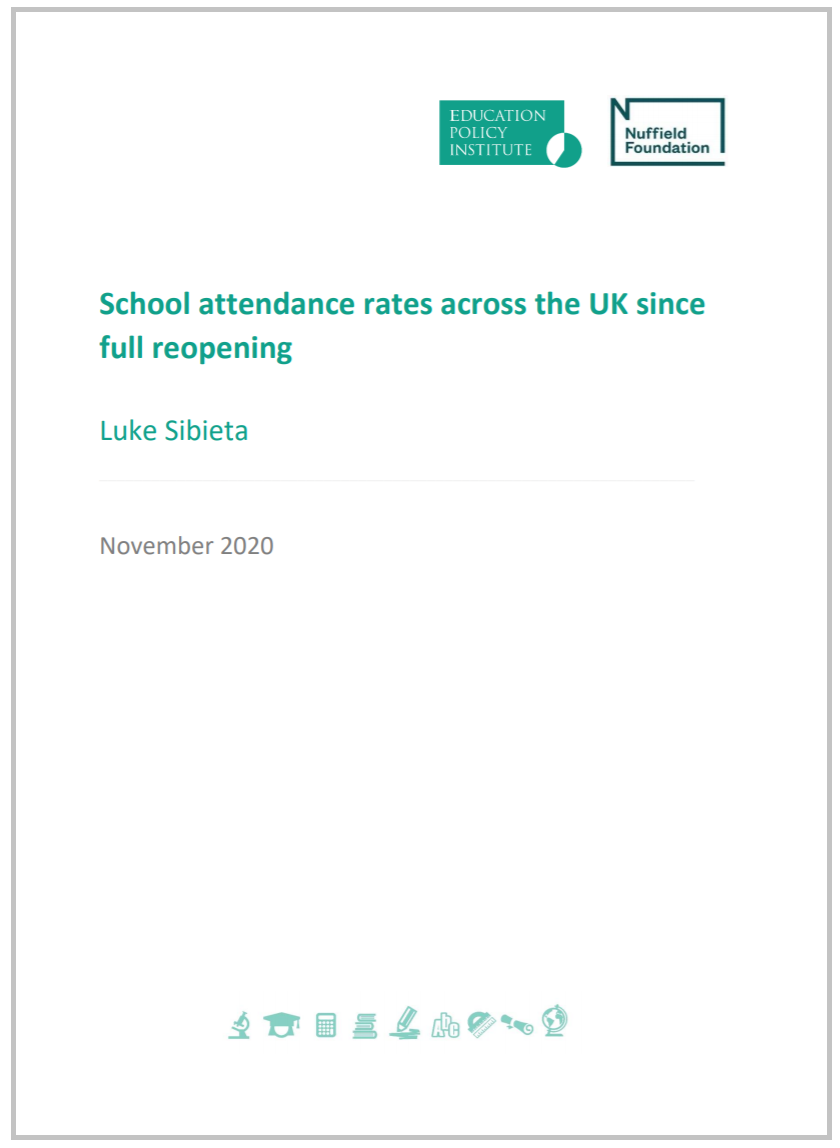New analysis from the Education Policy Institute (EPI) of the latest November school attendance data in the UK, supported by the Nuffield Foundation, shows that attendance in Wales and Northern Ireland increased following the short, sharp lockdowns in both countries.
In contrast, around the same period, the proportion of pupils in school in England and Scotland fell, and Covid-related absences began to climb.
It is now almost 3 months since pupils across the UK returned to school on a full-time basis. Ensuring that all pupils are back in the classroom has been crucial to allowing them to catch-up with any learning loss this year, however, schools have faced challenges with attendance levels amid the second wave of the pandemic.
The new EPI comparison of UK school attendance finds that:
- In Scotland, in the second week of November, school attendance rates fell to 89%. Covid-related absences rose to 4%.
- In England during the same period, attendance rates fell to less than 88%. Covid-related absences also climbed back up to 6-7%.
- In Northern Ireland, school attendance is higher. In early November it rose to 91-92% following two weeks of school closures. Covid-related school absences were 8% before this two-week lockdown, but have now halved to 3-4%.
- In Wales, attendance is also higher than Scotland and England, standing at 91% in the second week of November. This followed the two-week ‘fire-break” lockdown in Wales. Welsh attendance levels were previously the lowest in the UK in September and October.
While there are differences between the four UK nations, the analysis shows that within each country there is also considerable variation in attendance rates, both among local areas (despite some areas having similar levels of infection) and between different groups of pupils.
In particular, there is increasing evidence that the most disadvantaged pupils across the UK are disproportionately affected. November data from Scotland continues to show that school attendance rates are lowest in the most deprived areas (84%) and highest in the least deprived areas (93%).
Support for pupils missing school
Following the continuing Covid-related absences seen across the UK, the new paper also considers policies to mitigate learning loss, and options for next year’s exams.
In some areas, high infection rates are likely to mean multiple self-isolation episodes for some pupils, meaning some pupils could have missed as much as a month of school or more since the start of the new school year. This is on top of lost learning time during the lockdown in the spring.
The paper calls on policymakers to explore adjusting exams grades and allowing some grade inflation, while universities and colleges should also consider contextualising entry requirements in 2021, based on pupils’ time out of school.
EPI also urges governments across the UK to provide more regular, detailed data on how school attendance is changing across local areas to enable greater scrutiny, and to aid the delivery of targeted support for those pupils who have been most affected.
There is currently a lack of understanding of which pupils are missing out on school, and how much they are missing. For example, the paper highlights how school absence rates by local area are published regularly for Scotland and Wales, but not in England, while differences by key pupil characteristics such as level of disadvantage are only published in Scotland.
Read the full paper here.
This report is funded by the Nuffield Foundation. The Nuffield Foundation is an independent charitable trust with a mission to advance social wellbeing. It funds research that informs social policy, primarily in Education, Welfare, and Justice. It also funds student programmes that provide opportunities for young people to develop skills in quantitative and scientific methods. The Nuffield Foundation is the founder and co-funder of the Nuffield Council on Bioethics and the Ada Lovelace Institute. The Foundation has funded this project, but the views expressed are those of the authors and not necessarily the Foundation.

Visit www.nuffieldfoundation.org


